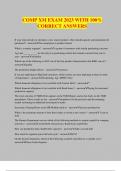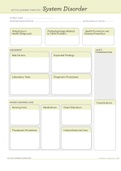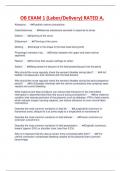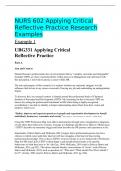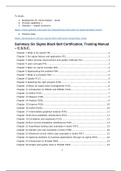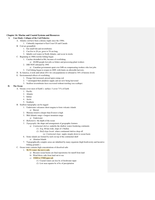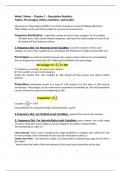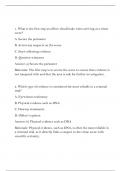February 6th, 2024: Phases of the Moon
- Orbital Period: The moon completes one full orbit around the Earth in 27.3 days
- Phase Cycle: The moon returns to same position relative to the sun every 29.5 days
- The phases of the moon are determined by how much illumination we can see from Earth in this 29.5 day
period
- The moon is tidally locked, we only see one side at all times
- Moon phase names:
- New Moon: no illumination
- Waxing Crescent: Small illumination from the right
- First Quarter: Quarter of the moon illuminated from the right
- Waxing Gibbous: More than half of the moon is illuminated from the right
- Full Moon: Moon is fully illuminated
- Waning Gibbous: More than half of the moon is illuminated from the left
- Third Quarter: Quarter of the moon illuminated from the left
- Waning Crescent: Small illumination from the left
Why do we see moon phases?:
- Sunlight hits the Moon and the Earth at the same angle
- T Moon progresses through orbit West to East at 0.5 dph
- Half of the moon is always illuminated by the sun, the phases are what we can see from Earth
February 13th, 2024: Module 6
Ancient Observables:
- Ancient greeks were the first to compose conceptual models of nature
Eclipses:
- Lunar Eclipse: Occurs when the Earth is directly between the Sun and Moon
- Solar Eclipse: Occurs when the Moon lies directly between the Sun and the Earth
Motion of the Planets:
- Apparent Retrograde Motion: Occurs when we pass by a planet in its orbit
Early Models of the Universe:
- Thales ~600 BC: First person to make a natural model of the universe (Earth is a flat disk in an infinite
ocean)
- Anaximander: First to propose the celestial sphere model
- Pythagoreous ~500 BC: First to teach that the Earth must be round
- Ptolemaic Model ~100 AD: Ptolmey explained apparent retrograde motion
Copernicus, Tycho, and Kepler:
- Copernicus: Considered a Sun-centered heliocentric model
- Ellipse: Elongated circle
, - Kepler’s Law of Planetary Motion:
- 1st Law: The orbit of each planet around the Sun is an ellipse with the Sun at one focus
- 2nd Law: As a planet moves around its orbit, it sweeps out equal areas in equal times
- 3rd Law: More distant planets orbit the Sun at slower average speeds, obeying a precise
mathematical relationship: p^2 = a^3
February 18th, 2024: Module 7
Galileo:
- First to use a telescope
- Solidified
- Father of Modern Astronomy
- 2 main contributions:
- Moons of Jupiter (Io, Europa, Ganymede, Callisto)
- Phases of Venus (Geocentric and heliocentric models are not the same)
- Objections to Kepler’s Laws:
- The Earth could not be moving because objects would be left behind as the Earth moved
- Galileo used rolling balls to show that an object in motion will remain in motion until an
external force acts on it
- Orbits could not be non-circular because the sky is perfect
- Proved that the sky is not perfect by observing craters, sun spots, etc.
- No one detected the stellar parallax that should occur if the Earth orbits the Sun
- Galileo used his telescope to see that Milky Way was made up of countless stars
Making sense of motion:
- Speed = Distance/ Time (m/s)
- Velocity: Speed and direction
- 10 m/s due East
- Acceleration: Any change in velocity (Speed/ Time) (m/s^2)
- Momentum: Mass * Velocity
- Force: Mass * Acceleration
- Mass: Amount of matter in an object
- Weight: Force that acts upon an object
Newton’s Laws:
- First law: A body remains at rest or moves in a straight line at a constant speed unless acted upon by an
outside force
- Second law: Force = Mass * Acceleration
- Third law: When one object exerts a force on a second object, the second object exerts an equal and
opposite force on the first object
- Orbital Period: The moon completes one full orbit around the Earth in 27.3 days
- Phase Cycle: The moon returns to same position relative to the sun every 29.5 days
- The phases of the moon are determined by how much illumination we can see from Earth in this 29.5 day
period
- The moon is tidally locked, we only see one side at all times
- Moon phase names:
- New Moon: no illumination
- Waxing Crescent: Small illumination from the right
- First Quarter: Quarter of the moon illuminated from the right
- Waxing Gibbous: More than half of the moon is illuminated from the right
- Full Moon: Moon is fully illuminated
- Waning Gibbous: More than half of the moon is illuminated from the left
- Third Quarter: Quarter of the moon illuminated from the left
- Waning Crescent: Small illumination from the left
Why do we see moon phases?:
- Sunlight hits the Moon and the Earth at the same angle
- T Moon progresses through orbit West to East at 0.5 dph
- Half of the moon is always illuminated by the sun, the phases are what we can see from Earth
February 13th, 2024: Module 6
Ancient Observables:
- Ancient greeks were the first to compose conceptual models of nature
Eclipses:
- Lunar Eclipse: Occurs when the Earth is directly between the Sun and Moon
- Solar Eclipse: Occurs when the Moon lies directly between the Sun and the Earth
Motion of the Planets:
- Apparent Retrograde Motion: Occurs when we pass by a planet in its orbit
Early Models of the Universe:
- Thales ~600 BC: First person to make a natural model of the universe (Earth is a flat disk in an infinite
ocean)
- Anaximander: First to propose the celestial sphere model
- Pythagoreous ~500 BC: First to teach that the Earth must be round
- Ptolemaic Model ~100 AD: Ptolmey explained apparent retrograde motion
Copernicus, Tycho, and Kepler:
- Copernicus: Considered a Sun-centered heliocentric model
- Ellipse: Elongated circle
, - Kepler’s Law of Planetary Motion:
- 1st Law: The orbit of each planet around the Sun is an ellipse with the Sun at one focus
- 2nd Law: As a planet moves around its orbit, it sweeps out equal areas in equal times
- 3rd Law: More distant planets orbit the Sun at slower average speeds, obeying a precise
mathematical relationship: p^2 = a^3
February 18th, 2024: Module 7
Galileo:
- First to use a telescope
- Solidified
- Father of Modern Astronomy
- 2 main contributions:
- Moons of Jupiter (Io, Europa, Ganymede, Callisto)
- Phases of Venus (Geocentric and heliocentric models are not the same)
- Objections to Kepler’s Laws:
- The Earth could not be moving because objects would be left behind as the Earth moved
- Galileo used rolling balls to show that an object in motion will remain in motion until an
external force acts on it
- Orbits could not be non-circular because the sky is perfect
- Proved that the sky is not perfect by observing craters, sun spots, etc.
- No one detected the stellar parallax that should occur if the Earth orbits the Sun
- Galileo used his telescope to see that Milky Way was made up of countless stars
Making sense of motion:
- Speed = Distance/ Time (m/s)
- Velocity: Speed and direction
- 10 m/s due East
- Acceleration: Any change in velocity (Speed/ Time) (m/s^2)
- Momentum: Mass * Velocity
- Force: Mass * Acceleration
- Mass: Amount of matter in an object
- Weight: Force that acts upon an object
Newton’s Laws:
- First law: A body remains at rest or moves in a straight line at a constant speed unless acted upon by an
outside force
- Second law: Force = Mass * Acceleration
- Third law: When one object exerts a force on a second object, the second object exerts an equal and
opposite force on the first object

